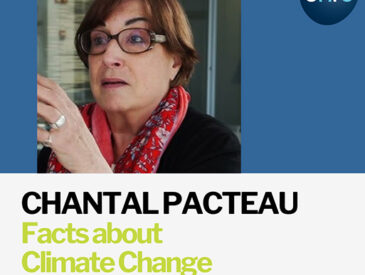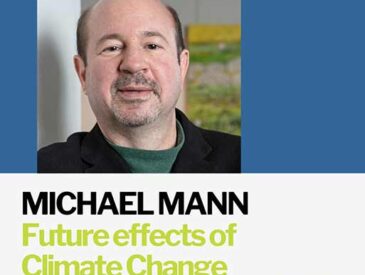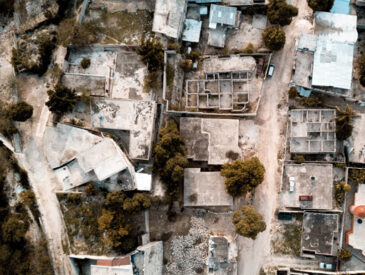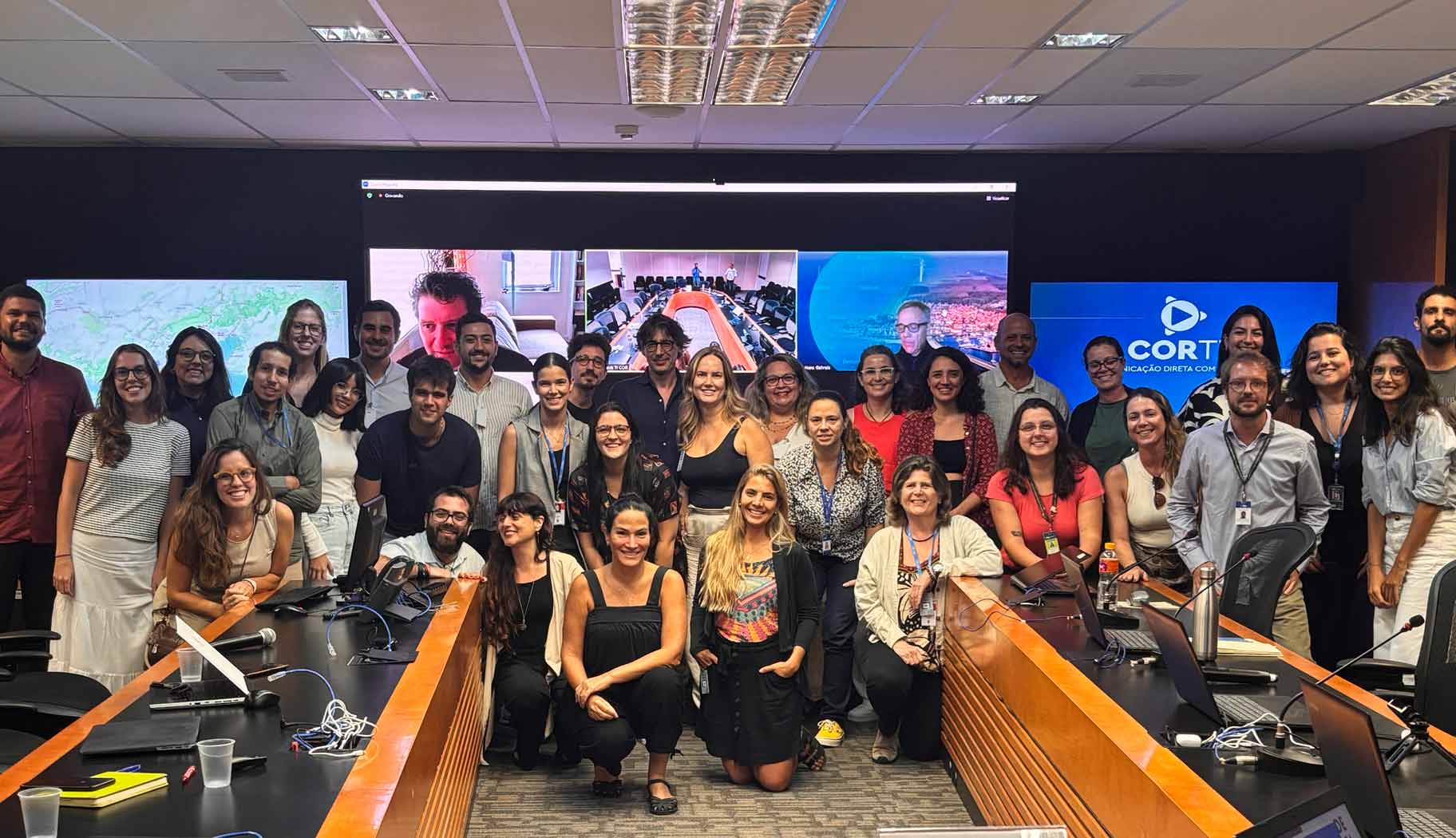List of Contents
- 1 Key points
- 2 Discover Third Assessment Report on Climate Change and Cities (ARC3.3)
- 3 Definition of Economic Impacts
- 4 Economic impacts of COVID-19 on Developing Countries
- 5 Economic Impact of COVID-19 in Urban Informal Settlements
- 6 Case Study: economic impact of COVID-19 on the energy consumption in Singapore
- 7 Case Study: Mexico City’s Altépetl Program
- 8 References
- 8.1 Coordinating Lead Authors
- 8.2 Lead Authors
- 8.3 Contributing/Case Study Authors
- 8.4 Element Scientist
- 8.5 Definition of economic impacts
- 8.6 Economic impacts of COVID-19 on Developing Countries
- 8.7 Economic Impact of COVID-19 in Urban Informal Settlements
- 8.8 Case Study: Mexico City’s Altépetl Program
- 8.9 Case Study: economic impact of COVID-19 on the energy consumption in Singapore
Key points
- COVID-19 Economic Impacts: the pandemic revealed underinvestment in public health and climate actions, particularly in developing countries, with cities facing tax revenue declines and limited resources for recovery and resilience efforts.
- Challenges for Developing Countries: immediate crisis response took precedence over long-term investments in areas like renewable energy and infrastructure. Green bonds and sustainability funds are potential solutions.
- Social Protection: expanding social insurance, subsidizing wages, and enhancing social assistance are crucial for supporting vulnerable groups during economic crises.
- Informal Settlements: informal settlement residents faced severe job losses, with limited government support to mitigate the economic impact.
- Singapore Case Study: the pandemic reduced energy consumption in commercial buildings, influenced by factors like occupancy rates and HVAC systems.
- Mexico City’s Altépetl Program: the program supported environmental conservation, employment, and food security during COVID-19 but faces challenges in securing long-term climate resilience investments.
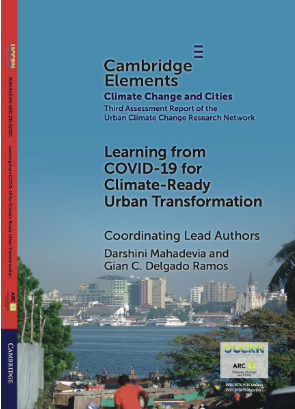
Discover Third Assessment Report on Climate Change and Cities (ARC3.3)
Cities and the urbanization process itself are at a crossroads. While the world’s urban population continues to grow, cities are increasingly pressed by chronic and acute stresses like increasing inequity, polluted air and waters, limited governance and financial capacities, along with entrenched spasmodic crime and conflict – and the COVID-19 pandemic. Climate change has now exacerbated these problems and in many cases created new ones, at a time when cities are asked to be the bulwark of the climate solution space.
Definition of Economic Impacts
The COVID-19 pandemic exposed both an underinvestment in public health and a deprioritization of local climate commitments due to financial constraints and limited capacities. As the crisis unfolded, cities experienced a decline in tax revenue, restricting their ability to fund recovery efforts. This shortfall necessitated emergency liquidity measures to manage debt payments and expand healthcare services, support testing and contact tracing, maintain public transport operations under social distancing rules, and provide relief to small businesses affected by lockdowns. As a result, cities’ capacity to invest in climate-resilient development was compromised with many planned actions postponed or scaled back—especially in developing nations.
A stark contrast emerged between wealthier and developing economies in terms of COVID-19-related expenditures. In high-income countries, funding was directed primarily toward long-term recovery efforts, whereas in developing nations, financial resources were overwhelmingly allocated to immediate crisis response. Even now, cities in developing economies continue to grapple with the socioeconomic repercussions of the pandemic, lacking adequate funding for essential long-term initiatives. Investment remains insufficient in critical areas such as water and sanitation infrastructure, renewable energy solutions (including household-level systems), urban retrofitting, and nature-based solutions. Additionally, there is a lack of mechanisms to integrate climate, environmental, and public health priorities into long-term infrastructure planning and land-use policies.
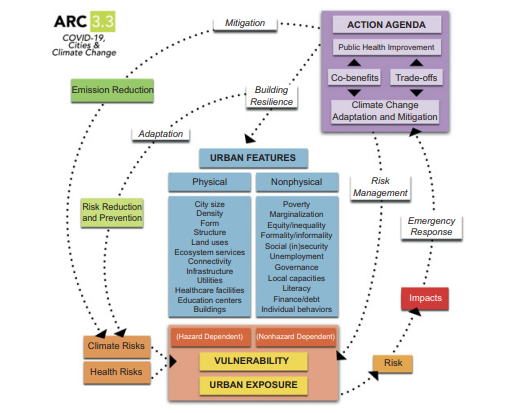
Given that developing and emerging economies are disproportionately affected by both climate change and COVID-19, securing new funding sources for sustainable recovery is an urgent priority. Investments in resilience can yield significant long-term benefits. Potential financial instruments include green bonds and international sustainability funds. Green budgeting tools can help ensure that funding is directed toward projects that maximize environmental, climate, and health co-benefits.
Strengthening national and local cooperation is also key to advancing more ambitious climate commitments, with cities playing a pivotal role in achieving sustainability targets. Programs such as the City Resilience Program (CRP) and the City Climate Finance Gap Fund, spearheaded by the World Bank and the European Investment Bank, aim to mobilize resources for low-carbon, climate-resilient urbanization.
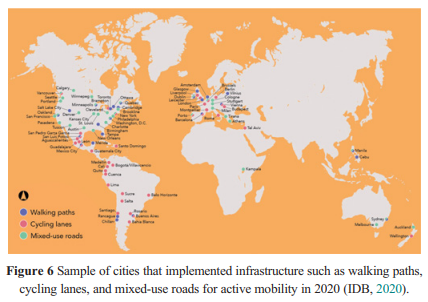
Within its first year, the City Climate Finance Gap Fund assisted 33 cities worldwide. Prioritizing investment in disadvantaged communities and informal urban areas is crucial for fostering inclusive, climate-resilient development. To bridge existing divides, cities must focus on improving urban services, promoting decentralized renewable energy solutions, advancing circular economy initiatives, restoring ecosystems, encouraging sustainable tourism and digital economy growth, and strengthening healthcare-related industries. In developing regions, economic transformation efforts should also aim to create employment opportunities, reduce dependency on imports, alleviate national debt burdens, and lower carbon footprints. By integrating these strategies, cities can transition toward a more sustainable and resilient future.
Economic impacts of COVID-19 on Developing Countries
The paper Social Protection Response to the COVID-19 Crisis: Options for Developing Countries (2020) by François Gerard, Clément Imbert, and Kate Orkin examines how low- and middle-income countries can implement effective social protection measures in response to the economic impact of COVID-19. The pandemic has had a devastating effect on economies worldwide, but the consequences for developing countries have been particularly severe. Strict restrictions on movement and economic activities have led to widespread job losses, plunging many vulnerable households into financial distress. Unlike high-income countries, which often have more robust social insurance systems, many developing nations lack comprehensive social safety nets. This has left millions of people without the support they need to survive during these trying times.
To mitigate these challenges, several social protection strategies can be considered:
- Firstly, expanding social insurance can play a critical role. We need to strengthen unemployment benefits and job retention schemes to ensure that workers can maintain their livelihoods even during economic downturns. Additionally, subsidizing wages can help prevent job losses, ensuring that employees remain attached to their employers. Another potential strategy is allowing early withdrawals from retirement funds, which would provide immediate financial relief to those in dire need.
- Secondly, enhancing social assistance programs can directly support vulnerable groups. Increasing cash transfers and food subsidies would help alleviate the immediate financial strain on the poorest households. Adapting conditional assistance programs is also important—this might include temporarily suspending work requirements to account for the disruption caused by the pandemic.
- Another vital strategy is leveraging local governments and non-state institutions. Local governments, non-governmental organizations (NGOs), and community organizations have a crucial role to play in identifying and assisting at-risk groups. By providing financial aid through decentralized networks, relief can be delivered more quickly and effectively, ensuring that it reaches those who need it the most in a timely manner.

Economic Impact of COVID-19 in Urban Informal Settlements
The study “The Socioeconomic Impact of COVID-19 in Urban Informal Settlements” (2021) by Diego Gila, Patricio Domínguez, Eduardo A. Undurraga, and Eduardo Valenzuela highlights the severe economic impact on informal settlement dwellers:
- Governments have implemented large-scale non-pharmaceutical interventions to control the spread of COVID-19.
- These measures have had dramatic social and economic effects on the population, particularly affecting vulnerable communities.
- Individuals living in urban informal settlements are in a structurally disadvantaged position to cope with this crisis.
- The pandemic has also triggered neighborhood cooperation within the settlements as well as targeted government assistance, but not enough to counteract the magnitude of the economic loss.
- Using panel data, the study documents a dramatic employment loss among informal settlements dwellers, substantially larger than the general population.
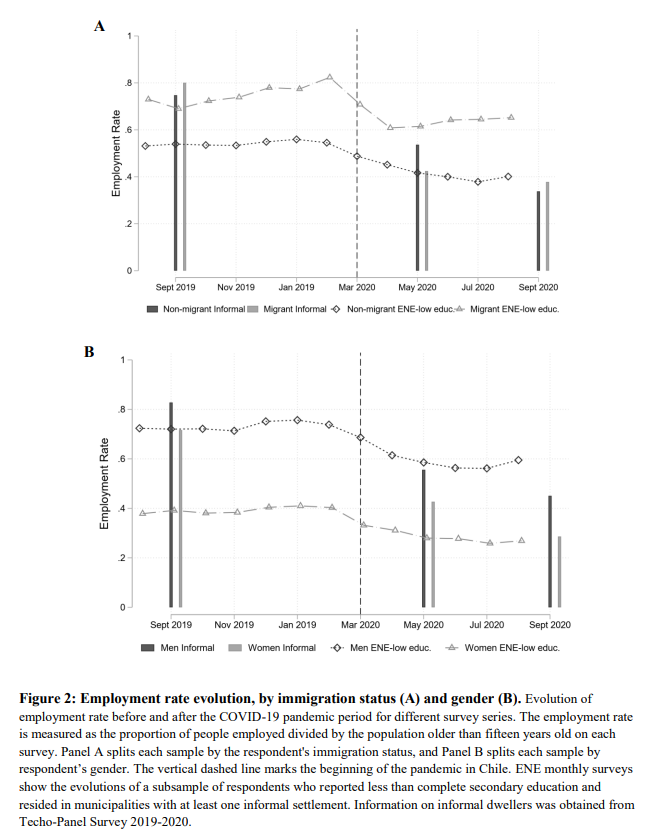
Case Study: economic impact of COVID-19 on the energy consumption in Singapore
The study titled “Impact of COVID-19 on the energy consumption of commercial buildings: A case study in Singapore” by Senhong Cai and Zhonghua Gou, conducted at the School of Urban Design, Wuhan University, Wuhan, China, explores the influence of the pandemic on energy use in commercial buildings in Singapore (Cai & Gou, 2020):
- COVID-19 Impact: the pandemic affected over 200 countries, causing significant changes in global human activity, with quarantine measures leading to city closures, work stoppages, and home-based work/study.
- Economic Impact: estimated global cost of $2 trillion in 2020, decreasing global GDP by 4.6%, and having significant effects on energy, environment, and tourism.
- Energy Demand Decline: reduced energy demand globally due to shutdowns with a sharp decline in oil demand and energy consumption in sectors like tourism, retail, and offices.
- Building Sector: commercial buildings account for a significant share of global energy consumption and have a large potential for energy efficiency improvements and CO2 reduction.
- Impact on Energy Consumption: commercial buildings, particularly in retail and tourism, faced reduced energy use during the pandemic, with changes in factors influencing energy consumption, such as HVAC systems, occupancy rates, and building function.
- Study Focus: the study aims to analyze how COVID-19 influenced energy use in commercial buildings in Singapore, looking at energy use intensity (EUI) and the factors affecting it before and during the pandemic.
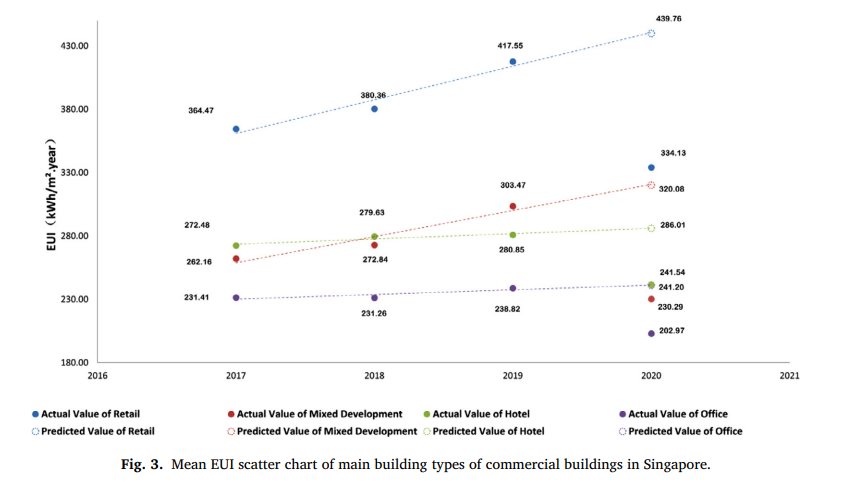
Case Study: Mexico City’s Altépetl Program
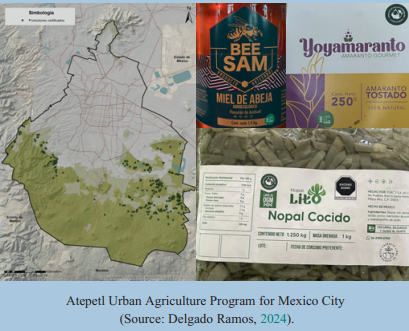
Mexico City, with 41% of its land classified as urban and the remaining 59% designated for rural or conservation use, faces unique environmental and socio-economic challenges. The Altépetl Program was introduced to counteract ecosystem degradation due to urbanization, illegal logging, and forest fires while supporting vulnerable communities. Between 2019 and 2022, the program achieved significant milestones:
- 19.2 million hectares of community conservation areas preserved.
- 23.1 million plants and trees planted.
- Over 50,000 economic grants benefiting more than 167,000 indirect recipients.
- Recovery of nearly 5,000 hectares of idle land for sustainable use.
- Training for 15,000 “facilitators for change.”
- Certification and promotion of locally produced organic and GMO-free foods, including corn, oats, amaranth, nopal cactus, broccoli, radish, mushrooms, eggs, and honey.
The program’s impact extended beyond environmental conservation. It provided employment opportunities during the peak of COVID-19-related job losses and helped stabilize food prices amid rising inflation. Furthermore, it strengthened local food security by supporting urban and peri-urban farmers, ensuring the availability of fresh and affordable produce through distribution networks, food fairs, and e-commerce.
Despite such successes, broader commitments to climate resilience remain limited. Challenges persist in securing long-term investments in water and sanitation infrastructure, renewable energy, and nature-based urban redesign. Emerging funding mechanisms, such as green bonds and sustainability funds, offer potential solutions.
References
Coordinating Lead Authors
- Darshini Mahadevia, Ahmedabad University, Ahmedabad
- Gian C. Delgado Ramos, National Autonomous University of Mexico, Mexico City
Lead Authors
- Janice Barnes, Climate Adaptation Partners and the University of Pennsylvania, New York/Philadelphia
- Joan Fitzgerald, Northeastern University, Boston
- Miho Kamei, Institute for Global Environmental Strategies, Hayama
- Kevin Lanza, University of Texas Health Science Center at Houston (UTHealth), Austin
Contributing/Case Study Authors
- Zaheer Allam, University of Paris, Paris
- Amita Bhide, Tata Institute of Social Sciences, Mumbai
- Yakubu Bununu, Ahmadu Bello University, Zaria
- Didier Chabaud, University of Paris, Paris
- Amitkumar Dubey, Ahmedabad University, Ahmedabad
- Yann Francoise, Climate and Ecological Transition Directorate at Paris City, Paris
- Saumya Lathia, Ahmedabad University, Ahmedebad
- María Fernanda Mac Gregor-Gaona, National Autonomous University of Mexico, Mexico City
- Carlos Moreno, Paris 1 Sorbonne University, Tunja/Paris
- Marie-Christine Therrien, Ecole Nationale d’Administration Publique – Cité-ID LivingLab Urban Resilience Governance, Montreal
- Nada Toueir, Lincoln University, Montreal
- Nelzair Vianna, Oswaldo Cruz Foundation, Salvador
Element Scientist
- Melissa López Portillo-Purata, National Autonomous University of Mexico, Mexico City
Definition of economic impacts
- Alayza, N., & Caldwell, M. (2021). Financing climate action and the COVID-19 Pandemic: An analysis of 17 developing countries. World Resources Institute Working Paper. www.wri.org/research/financing-climate-action-and-covid-19-pandemic.
- Angel, S., & Blei, A. (2020). COVID-19 thrives in larger cities, not denser ones. SSRN Scholarly Paper No. 3672321. https://doi.org/10.2139/ssrn.3672321.
- Bai, X., Nagendra, H., Shi, P., & Liu, H. (2020). Cities: Build networks and share plans to emerge stronger from COVID-19. Nature, 584(7822), 517–520. https://doi.org/10.1038/d41586-020-02459-2.
- Bhide, A. (2021). Informal settlements, the emerging response to COVID and the imperative of transforming the narrative. Journal of Social and Economic Development, 23(2), 280–289. https://doi.org/10.1007/s40847-020-00119-9.
- Lida, A., Yamazaki, T., Hino, K., & Yokohari, M. (2023). Urban agriculture in walkable neighborhoods bore fruit for health and food system resilience during the COVID-19 pandemic. npj Urban Sustainability, 3, Article 4. https://doi.org/10.1038/s42949-023-00083-3.
- McGowan, V. J., & Bambra, C. (2022). COVID-19 mortality and deprivation: Pandemic, syndemic, and endemic health inequalities. The Lancet Public Health, 7(11), e966–e975. https://doi.org/10.1016/S2468-2667(22)00223-7.
- Qiu, R. T. R., Park, J., Li, S., & Song, H. (2020). Social costs of tourism during the COVID-19 pandemic. Annals of Tourism Research, 84, 102994. https://doi.org/10.1016/j.annals.2020.102994.
- Senhong Cai, Zhonghua Gou (2024). Impact of COVID-19 on the energy consumption of commercial buildings: a case study in Singapore. https://pdf.sciencedirectassets.com/321619/1-s2.0-S2666123323X00087/1-s2.0-S2666123322000812/main.pdf
Economic impacts of COVID-19 on Developing Countries
- Gerard, F., Imbert, C., & Orkin, K. (2020). Social protection response to the COVID-19 crisis: Options for developing countries. Oxford Review of Economic Policy, 36(Supp_1), S281–S296. https://doi.org/10.1093/oxrep/graa026.
Economic Impact of COVID-19 in Urban Informal Settlements
- Gil, D., Domínguez, P., Undurraga, E. A., & Valenzuela, E. (2021). The socioeconomic impact of COVID-19 in urban informal settlements. https://doi.org/10.1101/2021.01.16.21249935.
Case Study: Mexico City’s Altépetl Program
- Cabrera-Cano, Á. A., Cruz, J. C. C. la, Gloria-Alvarado, A. B., ÁlamoHernández, U., & Riojas-Rodríguez, H. (2021). Asociación entre mortalidad por Covid-19 y contaminación atmosférica en ciudades mexicanas. Salud Pública de México, 63(4), Article 4. https://doi.org/10.21149/12355.
- Delgado Ramos, G. C. (2021). Climate-environmental governance in the Mexico Valley Metropolitan Area: Assessing local institutional capacities in the face of current and future urban metabolic dynamics. World, 2(1), Article 1. https://doi.org/10.3390/world2010003
- Delgado Ramos, G. C. (2023). Transformación urbana en tiempos de pandemia y postpandemia: Capacidades institucionales para la acción climática ambiental y de resiliencia en Ciudad de México y Juárez. In M. Suárez Lastra, & A. Ziccardi Contigiani (Eds.), Ciudades mexicanas y condiciones de habitabilidad en tiempos de pandemia (pp. 401–460). Coordinación de Humanidades, UNAM, Mexico City. https://decadacovid.humanidades.unam.mx/wp-content/uploads/DCM_tomo-12_CA.pdf.
- Delgado Ramos, G.C. (2024). Atepetl Urban Agriculture Program for Mexico City [Photograph]. Personal collection
Case Study: economic impact of COVID-19 on the energy consumption in Singapore
- Senhong Cai, Zhonghua Gou, Impact of COVID-19 on the energy consumption of commercial buildings: A case study in Singapore (2024). https://pdf.sciencedirectassets.com/321619/1-s2.0-S2666123323X00087/1-s2.0-S2666123322000812/main.pdf


